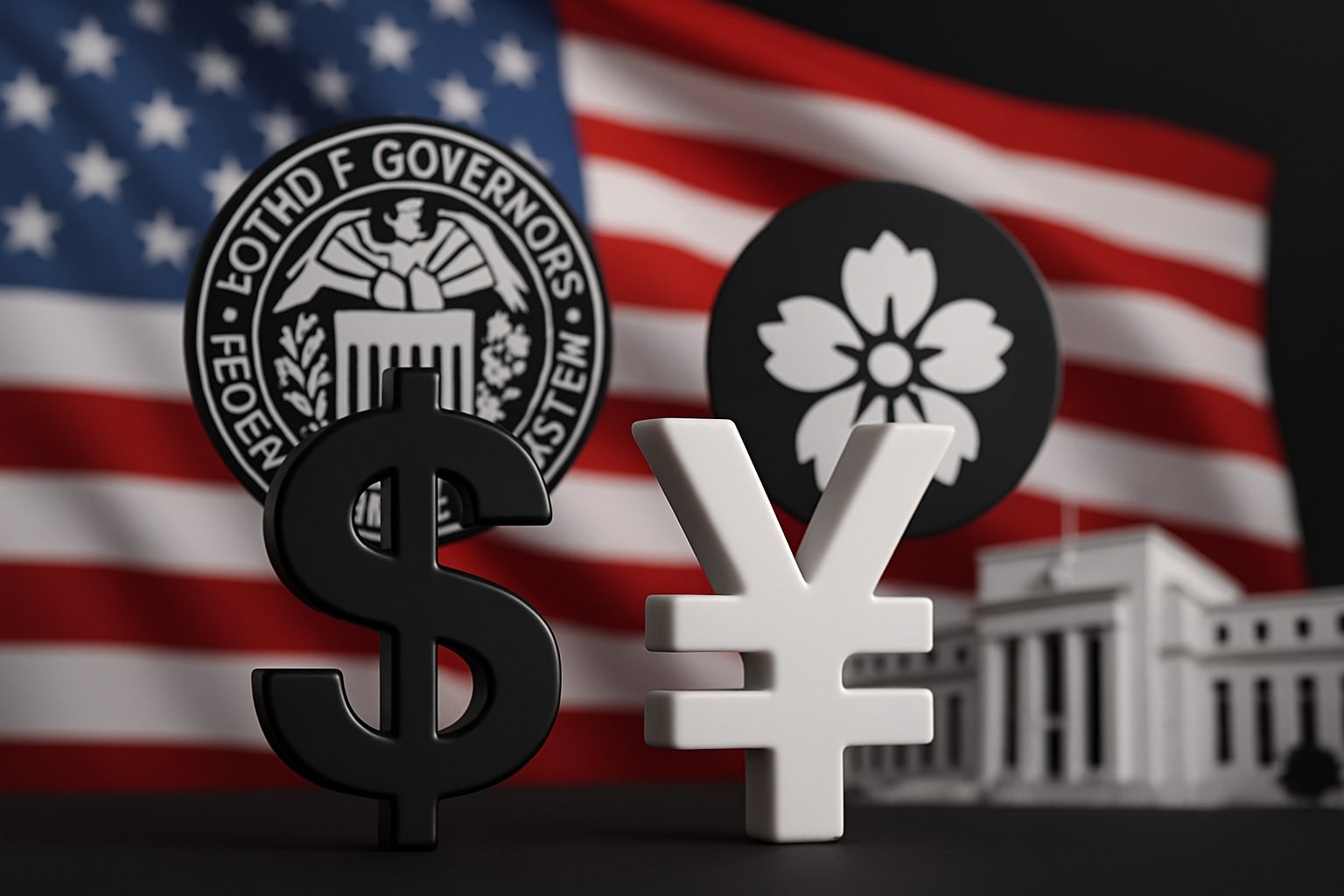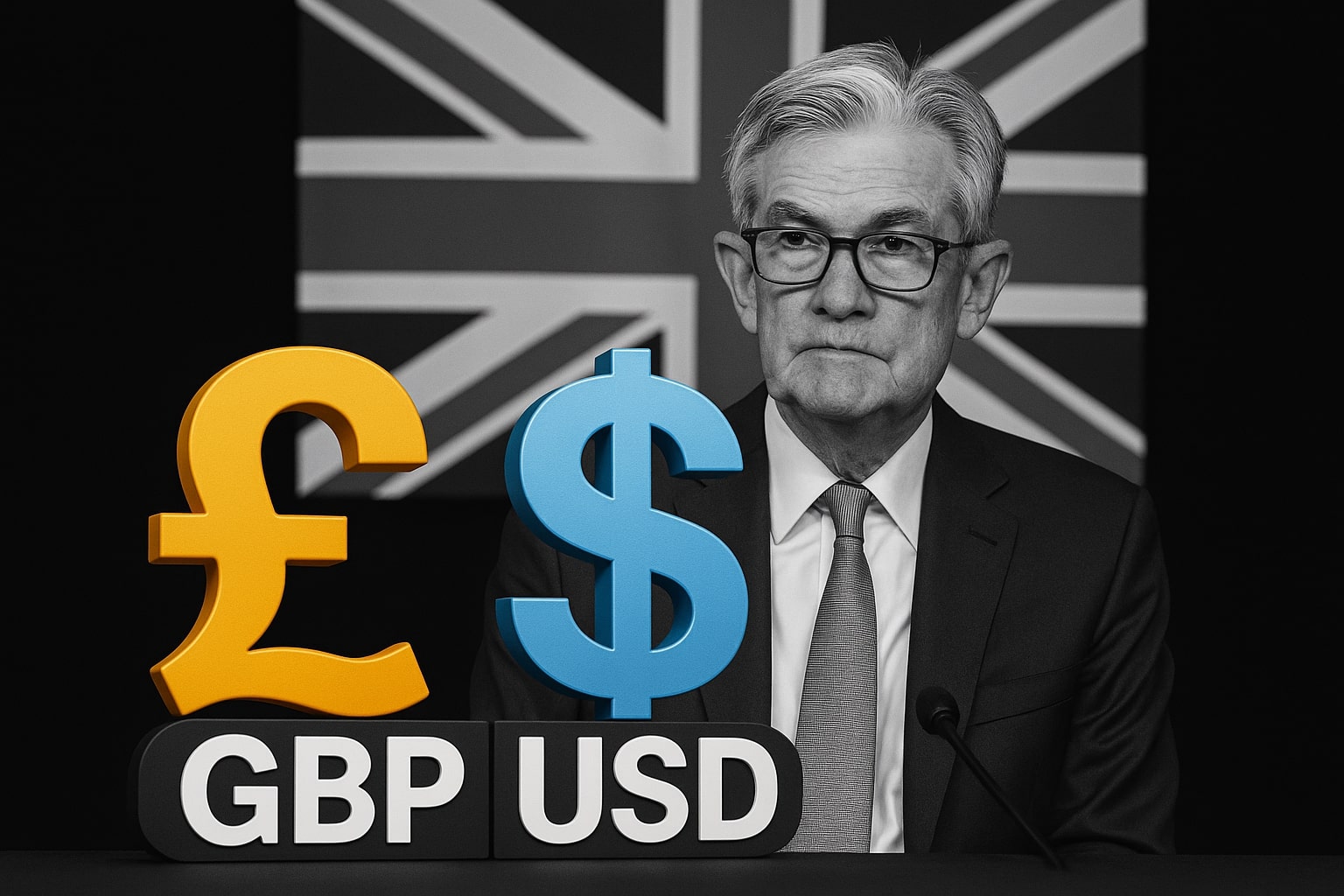
USD/JPY Price Forecast - Dollar to Yen Slides to 151.80 as Trade Tensions Boost Yen Strength
Dollar weakens as Fed rate-cut bets surge and Japan’s political instability drives safe-haven flows; pair retreats from 153.27 high, entering 149.20–153.00 consolidation zone amid fears of intervention and rising volatility premiums | That's TradingNEWS
USD/JPY (JPY=X) Slips Below 152.00 as Powell’s Caution, Trade Frictions, and Japan’s Political Rift Boost the Yen
Read More
-
VOO ETF Hits $630 as Fed Shift and AI Growth Power 2026 Rally Toward $700
07.12.2025 · TradingNEWS ArchiveStocks
-
XRP ETFs XRPI & XRPR Aim for $1B Inflows as XRP Holds $2.02 Support
07.12.2025 · TradingNEWS ArchiveCrypto
-
Natural Gas Price (NG=F) Rallies to $5.29, Freezing Temperatures Spark Bullish Breakout
07.12.2025 · TradingNEWS ArchiveCommodities
-
USD/JPY Price Forecast - Dollar Extends Slide to 154 as BoJ Hawkish Pivot Drive Yen Toward 150
07.12.2025 · TradingNEWS ArchiveForex
Macro Context: U.S. Fiscal Gridlock and Delayed Data Add to Uncertainty
The ongoing U.S. government shutdown, now entering its third week, has delayed several key economic releases, including retail sales and industrial production. However, the Bureau of Labor Statistics confirmed it will publish the CPI report on October 24, which could become the next decisive driver for USD/JPY direction. Any upside surprise in inflation could briefly revive dollar demand, though the overall macro tilt remains dovish due to Fed signaling and subdued Treasury yields.
In addition, global equity volatility and geopolitical risks are fueling yen demand. The Dow Jones Industrial Average (DJIA) erased a 600-point drop earlier this week but remains sensitive to headlines surrounding U.S.–China tariffs. In such risk-off episodes, USD/JPY tends to outperform as a liquidity hedge, often attracting short-term inflows into the yen from institutional asset allocators.
Trading Outlook: Range-Bound but Skewed Bearish
For now, USD/JPY is likely to oscillate between 149.50 and 153.00 as traders digest policy divergence and geopolitical uncertainty. The upper boundary near 153.00 remains heavily defended by intervention risk, while the lower bound around 149.00 is protected by Japan’s negative yield environment and institutional hedging flows. The pair’s near-term behavior will depend heavily on Powell’s follow-up remarks and the next round of U.S. inflation data.
From a strategic perspective, the probability favors consolidation rather than a directional breakout. Momentum traders should watch for a confirmed bounce above 151.70 to validate short-term bullish continuation toward 153.25, while a failure to hold 151.00 would open the path toward 149.80.
Verdict: HOLD – Range-Bound Between 149.20 and 153.00 with Downside Bias
Considering the balance between dovish Fed expectations, resilient Japanese safe-haven demand, and political uncertainty in Tokyo, USD/JPY (JPY=X) is entering a controlled consolidation phase. The trend has shifted from unidirectional strength to a tactical range where selling rallies near 153.00 and buying dips toward 149.50 may remain the dominant strategy. The bias is neutral-to-bearish in the short term but could turn constructive if U.S. data surprises to the upside and yields rebound in late October.



















